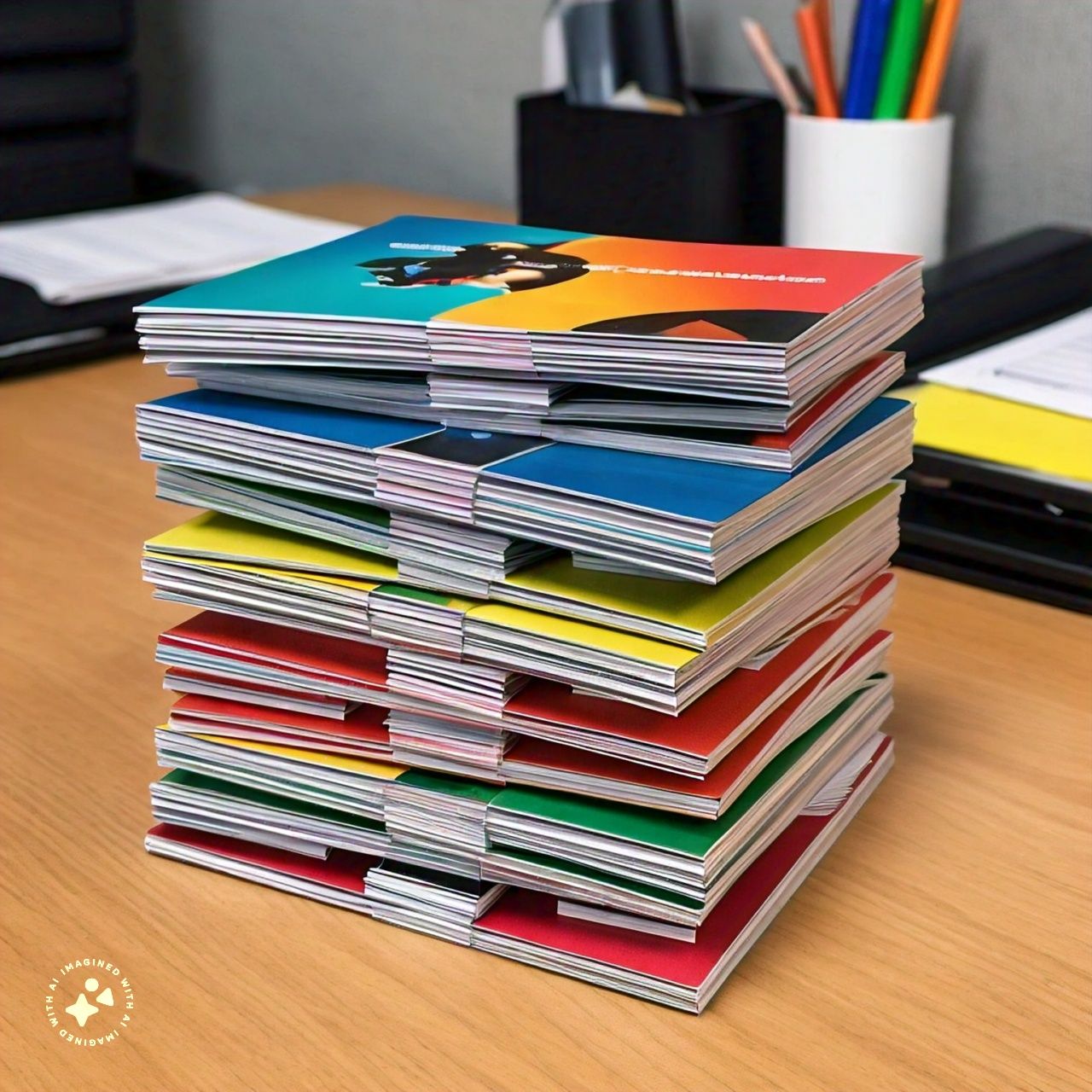What are saddle-stitched booklets?
Saddle-stitched booklets are books that have long printed pages that are folded in half and stitched to bind together. Many journals and coffee books are saddle stitched as well, this gives them a vintage and sturdy look overall.
It is one of the oldest and most common stitching methods for books.
Is saddle stitching better for books?
Advantages of saddle stitching
- Cost-effective
- Professional look
- Versatile
- Includes lengthy content
- Eco-friendly option
- Lay flat design
Importance of page arrangement in a saddle stitched booklet.
You want your booklet to tell your story, whether it is personal or about your growing brand.
What is key to any story telling? Yes it is the sequence of events.
Without a proper sequence and organized layout, your booklet can seem uninteresting causing people to lose interest soon.
A proper page arrangement will noonly keep the readers engaged but it will also ensure that nothing gets lost in translation . By following a proper sequence, the chances of errors and missing out on important content are also less.
Planning the Content:
- Page Organization
Now that you realize the importance of page organization, let’s jump to how to organize pages.
Here are a few tips that might help you with the same
- Be clear of your vision. It is okay to spend some extra time to put your vision on paper to check its practicality and the look.
- Create a rough draft. A rough draft will allow you to pour your idea into a printable form. This is also the step where you require more brainstorming and editing to make sure that you have put down everything you wanted.
- Experiment with a sequence with place cards. Use little cards to organize your booklet until you finally get a sequence that you are happy and content with.
- Designing the Layout:
Depending on the type of content you have, you will be required to decide the layout for the same.
Whether it is in landscape or portrait, you need to keep in the mind the binding and the look of a saddle stitch booklet.
It is also favorable to keep a consistent color and design theme while also keeping the content dynamic. The similar theme will allow easy readability and can create a reading flow promoting consumers to continue flipping.
A consistent theme will also display your brand’s identity increasing its visibility. This is important to build a credible reputation in the market.
Believe it or not, the audience notices small details and attention to details is a virtue of a good quality brand.
- Technical Considerations:
Once you are done with the content and you have finalized a theme as well, you must be thinking about the technicalities.
If you are incorporating digital media like photographs etc, it would need to fit into the saddle book perfectly.
You can do this by cropping them and cutting them manually later.
For the digital media, choose appropriate pixels so that after printing, the image does not look blurry or distorted.
- Printing and Production:
Now that you are happy with the final draft it is time to send your booklet for printing.
Before you commence the printing thought, here are a few tips you should consider;
- Ensure that the paper and ink quality is upto your standards. Poor ink can bleed, destroying your booklet and a bad quality pepper will give a cheap finish. This will lead to your booklet looking different in the end and compromise your image.
- Go eco friendly- using eco friending paper (eg. cotton paper, seed paper, recycled paper) and eco-friendly ink (e.g. squid ink) will not only save money but it will create your brand’s identity around being ethical and sustainable. This will also increase your reach in the environmental conscious genre of public
- Prior to sending your magazine for printing, do multiple checks and reviews to make sure that there are no mistakes and pending edits. This will save you a lot of time and resources.
- Final Review and Proofreading:
Before you send your book for printing, try running a test print first. This test print will allow you to see your product in its final form.
At this stage you can still make many changes and edits if you think that your booklet requires it. This will also permit catching any errors that may have gone unnoticed.
You can always ask your close friends to give reviews on the test print copy to help you make it perfect.
We hope that this essay could help you understand how to arrange the pages of a saddle stitched booklet and you have a wonderful experience.




